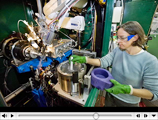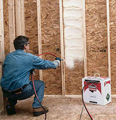


September marks the start of the fiscal year-end close process for Berkeley Lab. As an integrated contractor to the Department of Energy, the Lab must close its books and report FY 2009 financial results in a tightly coordinated schedule. Receiving and Accounts Payable will cut off at 6:30 p.m. on Friday, Sept. 18. Goods and services received Sept. 19-30 should be manually accrued. In addition to providing general information for the entire Lab community, there are specific activities and deadlines that directly affect finance and business management staff. For detailed information on the close process and a complete schedule of deadlines refer to the Year End Close wiki site.
 IT: Lab Partners With UC Berkeley to Enhance Access to eJournals
IT: Lab Partners With UC Berkeley to Enhance Access to eJournalsThe Lab’s Library is working in partnership with the UC Berkeley Library to ensure that all Lab employees will have access to the same electronic journals and other resources as our campus colleagues. The goal is to complete this by Oct. 2010. Our collection of eJournals has already increased by approximately 550 titles and will continue to grow between now and then. To see the new additions, go here.

 The Environmental Energy Technologies Division is receiving $663,000 from the Department of Defense, of which $455,000 is through the American Recovery and Reinvestment Act, to test a whole-building monitoring system at two DOD sites. EETD researchers, including Philip Haves (right) and Mary Ann Piette, working with United Technologies Research Center, will develop a system that will continuously acquire performance measurements of HVAC, lighting, and water usage, and compare these measurements in real time to a reference simulation model that represents the design intent for each building. More>
The Environmental Energy Technologies Division is receiving $663,000 from the Department of Defense, of which $455,000 is through the American Recovery and Reinvestment Act, to test a whole-building monitoring system at two DOD sites. EETD researchers, including Philip Haves (right) and Mary Ann Piette, working with United Technologies Research Center, will develop a system that will continuously acquire performance measurements of HVAC, lighting, and water usage, and compare these measurements in real time to a reference simulation model that represents the design intent for each building. More>
 ALS: Intern’s Videos Answers ‘What is the Advanced Light Source?’
ALS: Intern’s Videos Answers ‘What is the Advanced Light Source?’ How do you explain the science at the Advanced Light Source to those without a science background? Emma Floyd, an undergraduate journalism student working with ALS Communications, created two videos to try and answer that question. "What is the Advanced Light Source?" gives a brief look at what the ALS is, who uses it, and how it works. In "The Big, The Small, and The ALS," viewers get an idea of the scale of the science done at the ALS with a quick look at some of the incredible numbers and measurements scientists use daily.
 [Science Magazine] Science has gotten bigger in the past decade. There are more scientists doing research and more competition for funding, jobs, and journal space. Projects have become larger in scale, often requiring the collaboration of several groups. Techniques are more powerful, generating massive amounts of data. There are also more career options for researchers to pursue. How have these changes affected the postdoctoral research experience? We asked postdoc supervisors who completed a recent survey for "Science Careers" to share their views. More>
[Science Magazine] Science has gotten bigger in the past decade. There are more scientists doing research and more competition for funding, jobs, and journal space. Projects have become larger in scale, often requiring the collaboration of several groups. Techniques are more powerful, generating massive amounts of data. There are also more career options for researchers to pursue. How have these changes affected the postdoctoral research experience? We asked postdoc supervisors who completed a recent survey for "Science Careers" to share their views. More>
 City of Berkeley: Free Workshops on Making Homes Energy Efficient
City of Berkeley: Free Workshops on Making Homes Energy Efficient The City of Berkeley is sponsoring free workshops on protecting and insulating homes to save energy, money, and improve air quality. The workshops will be led by home performance contractors and energy specialists, with presentations by city staff, PG&E, the Ecology Center and SmartSolar. Free snacks and giveaways are included. Go here for information on workshop dates, locations, and registration.
Today at Berkeley Lab is produced by Public Affairs' Communications Department